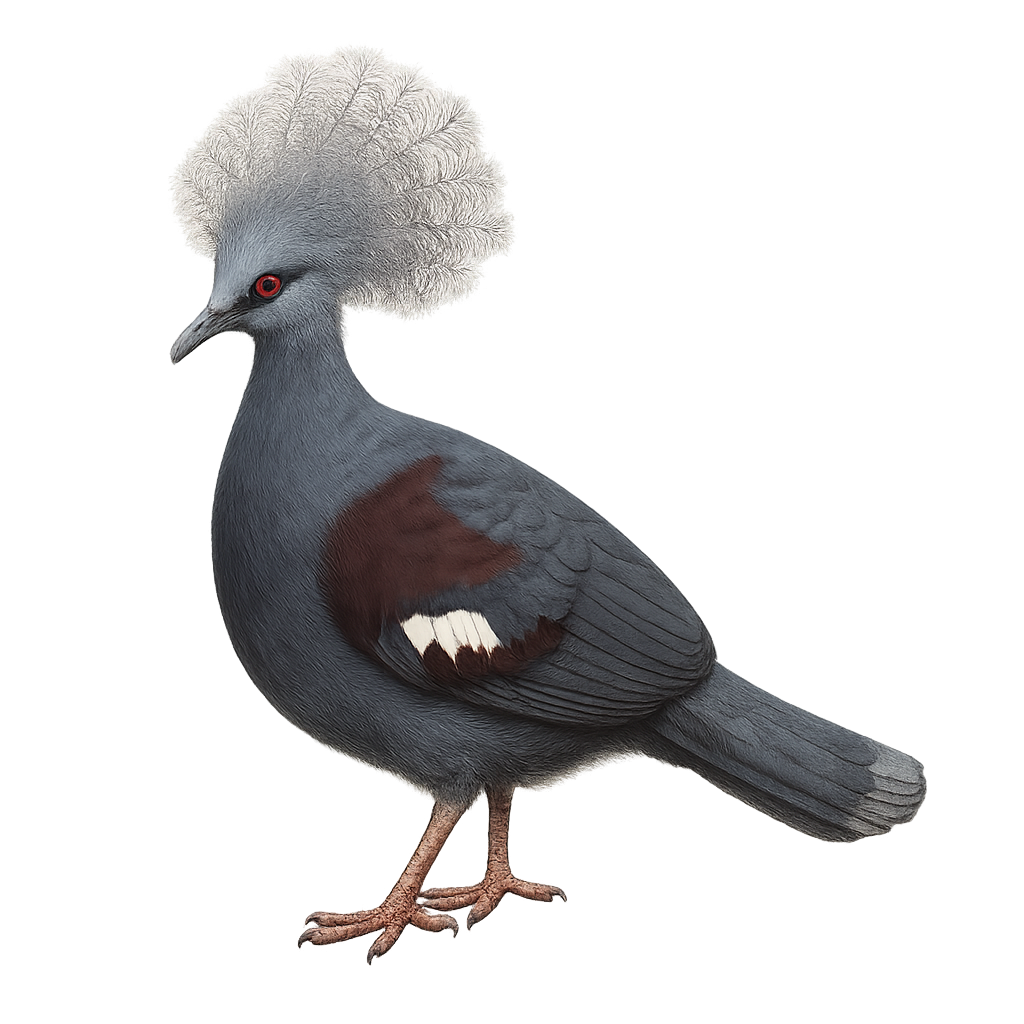Your wildlife photography guide.
Explore the western crowned pigeon in detail, study its behavior, prepare your shots.
Where to observe and photograph the western crowned pigeon in the wild
Learn where and when to spot the western crowned pigeon in the wild, how to identify the species based on distinctive features, and what natural environments it inhabits. The WildlifePhotographer app offers tailored photography tips that reflect the western crowned pigeon’s behavior, helping you capture better wildlife images. Explore the full species profile for key information including description, habitat, active periods, and approach techniques.
Western Crowned Pigeon
Scientific name: Goura cristata

IUCN Status: Vulnerable
Family: COLUMBIDAE
Group: Birds
Sensitivity to human approach: Suspicious
Minimum approach distance: 10 m
Courtship display: September to October
Incubation: 27-29 jours
Hatchings: September to November
Habitat:
Tropical forests, mangroves, wetlands
Activity period :
Primarily active during the day, with peak activity in the morning and late afternoon.
Identification and description:
The Western Crowned Pigeon, or Goura cristata, is a majestic bird native to the forests of New Guinea. This large pigeon is easily recognizable by its delicate feathered crest and striking blue-grey plumage. It measures about 70 cm in length and can weigh up to 2.5 kg. Its elegant appearance and graceful gait make it a fascinating sight in its natural habitat. The Western Crowned Pigeon is a social bird that lives in small groups and primarily feeds on fruits, seeds, and insects. Although its flight is powerful, it prefers to walk on the ground in search of food. Unfortunately, this species is threatened by deforestation and hunting.
Recommended lens:
400 mm – adjust based on distance, desired framing (portrait or habitat), and approach conditions.
Photography tips:
To photograph the Western Crowned Pigeon, it is advisable to use a telephoto lens of at least 400mm to capture detailed images without disturbing the bird. Look for areas where these pigeons feed or rest, often on the ground or in low trees. Be patient and discreet, as although they are tolerant, they may fly away if disturbed. Take advantage of the golden hours in the morning or afternoon for soft and flattering light.
The WildlifePhotographer App is coming soon!
Be the first to explore the best nature spots, track rutting seasons, log your observations, and observe more wildlife.
Already 1 430 wildlife lovers subscribed worldwide

